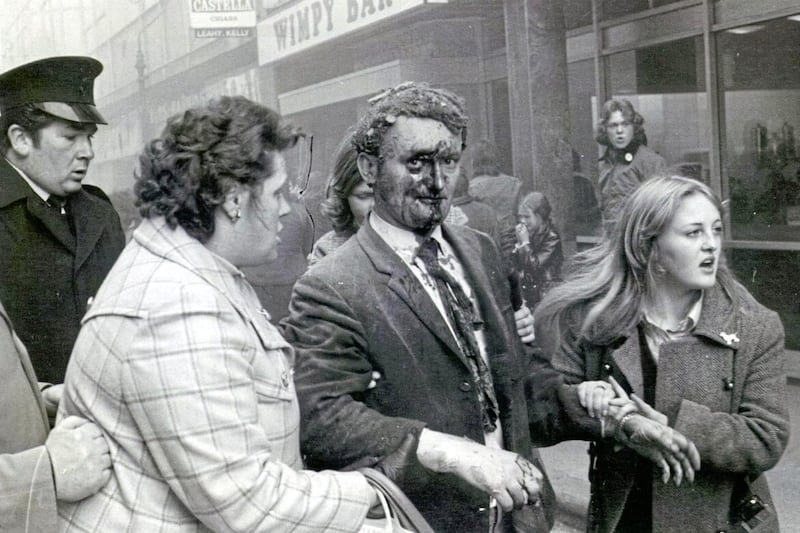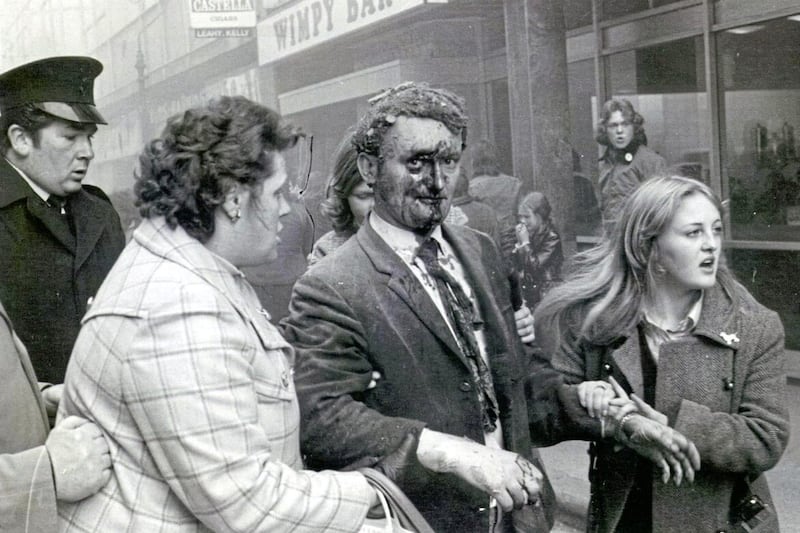MORE than a century ago, Belfast was full of the noise of linen mills and horses and carts taking fabric and raw fibres to be sold in the famous White Linen Hall.
The factories may have closed but evidence of the trade that led to the city being dubbed 'Linenopolis' is still there.
Now a new exhibition at the Linen Hall library aims to shed some light on the linen manufacturing which made the city an industrial power house.
Rachel Brady, who curated the National Lottery-funded exhibition, said the library itself was formerly a linen storehouse - as shown by the swags of fabric carved over its entrance hall.
"The buildings around the area connect so much to the heritage of linen, that's why we called our exhibition Linenopolis," she said.
"Linen was so successful that they were able to build the whole city around it.
"People came in from the countryside to work in places like Ligoniel. Ewarts (linen producer) had a huge office facing the city hall. It's really part of the historic, cultural landscape of Belfast city centre."
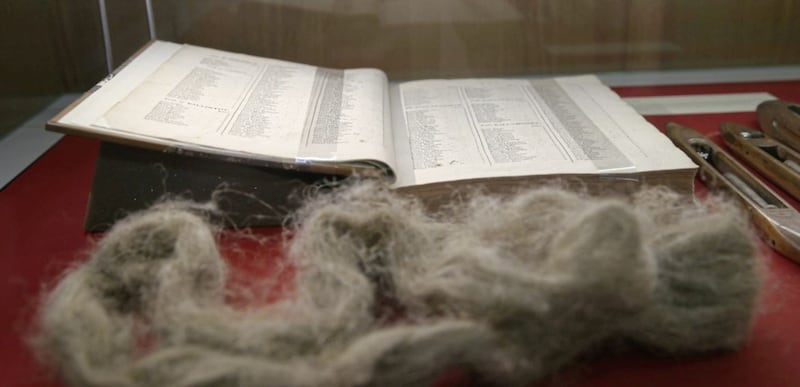
Linen production in Ireland trade dates back to the 13th century but it became a serious industry in the 18th century.
"The linen industry really came on the coat tails of the cotton industry," she said.
"The big boom came in the 19th century when Belfast became Linenopolis.
The fabric is closely associated with fine white tablecloths and patterned damask but Ms Brady said it was used by everyone.
"Linen didn't start off as a luxury product," she said.
"There were different types of linen - you had brown linen, more coarse linen, you had fine linens available and damask for tablecloths but ultimately it was a working fibre.
"If you look at all the old photographs of people working in the mills they will have linen aprons on."
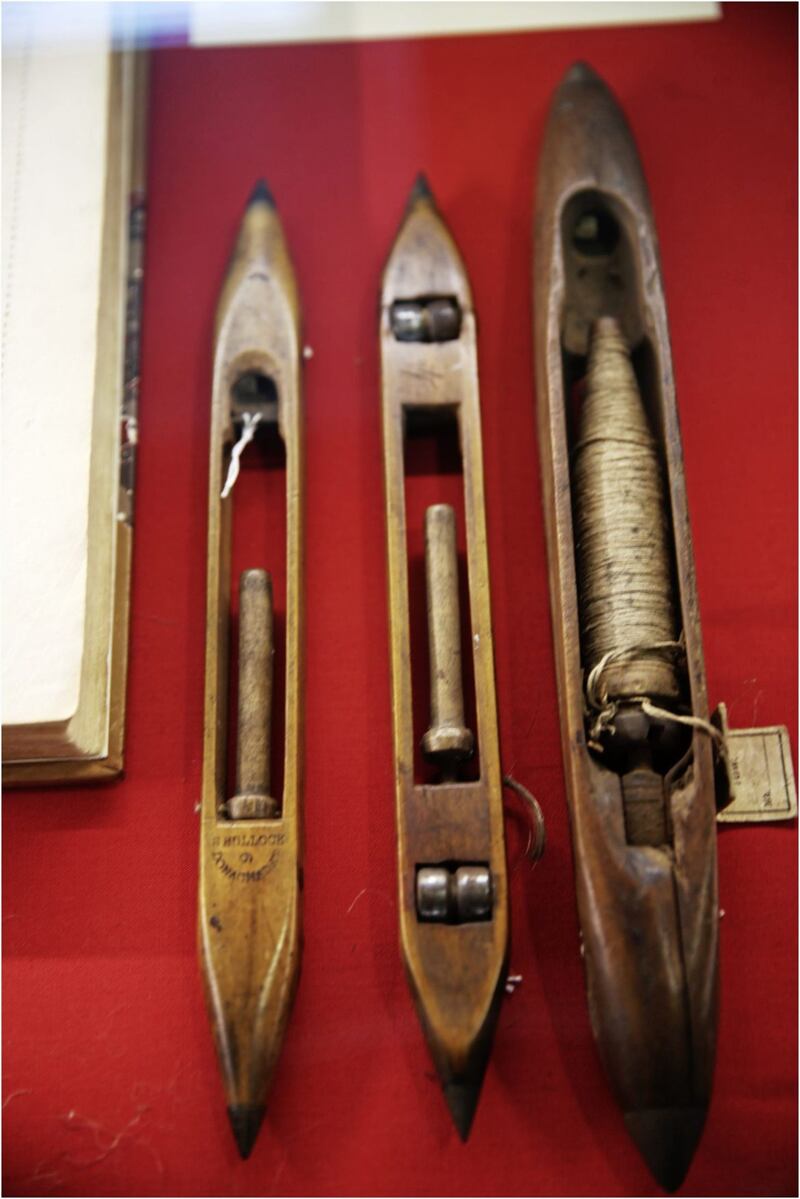
Evidence of the linen trade is dotted across the north.
One exhibit shows a photo of a squat stone watchtower outside Limavady, Co Derry, which was manned 24 hours a day to stop people from stealing linen from a 'bleaching green' - a field where the cloth was laid in the sun to whiten the fibres.
The entire linen production process was done in Ireland although linen seed tended to be exported from mainland Europe.
"Linen was grown in the fields," she said.
"You would have had the bleaching greens in the countryside, all of the weaving and beetling factories to break down the fibre.
"It was a very hard job, a difficult job. People suffered health problems because of it. Fibres were floating in the atmosphere of the factories.
"People were standing in water up to their ankles because the fibre needed to be in a moist environment to be workable and create a good product."
Ms Brady said the process of turning flax into linen was lengthy and involved the cut flax stalks being steeped in water, dried, then beaten to remove the tough outer stalks and expose the silky linen fibres.
"That (the process) would have produced a really rank smell and that is something that people who worked in the factories and linen trade would remember," she said.
"We have some of the Northern Ireland Screen Archive available.
"Whenever you watch that process you can understand where the term flaxen hair came from because whenever the material is being worked you can see it turning into something as shiny as hair. It's beautiful."
One of the most fascinating exhibits is a book listing the names of flax growers from across Ireland. Dating from 1796, the rare book notes each grower by their townland.
Other exhibits include a top hat owned by linen baron Edward Gribbon, glass design plates for the company who produced linens for the Titanic and a 1930s newspaper article about an intriguing owner of Carrick Hill mill.
"He was called the Infant. They said he was about seven feet tall and was quite burly. It was a bit of a jokey name to give him," Ms Brady said.
Visitors to the exhibition can listen to people's memories of working in linen mills.
As part of the exhibition and a walking tour she is developing for the library, Ms Brady spoke to several people whose families were linked to the linen industry.
"People had memories of their grandparents bringing work home even though they had very long hours with hardly any breaks or days off," she said.
She said even after the demise of the industry "the mill chimneys were still embedded in people's memory".
"As children they can remember running around the huge factory sites playing," she said.
"We had people in Ligoniel - obviously there's a big mill dam up there - who said that when they went up there they could still find some spools with thread."
Ms Brady said Belfast workers had such expertise in the fabric that a man who worked in York Street mill was sent to analyse the linen bandages wrapped around King Tutankhamun's mummy following the discovery of the Egyptian pharaoh's tomb in 1922.
"It just illustrates how specialist the people in Belfast were. There was nowhere else that could offer that kind of specialist knowledge," she said.
The exhibition is free to view and runs every weekday until August 1.
Linen walking tours will take place at 10am from the Linen Hall Library on August 9, 16, and 23 and cost £10.
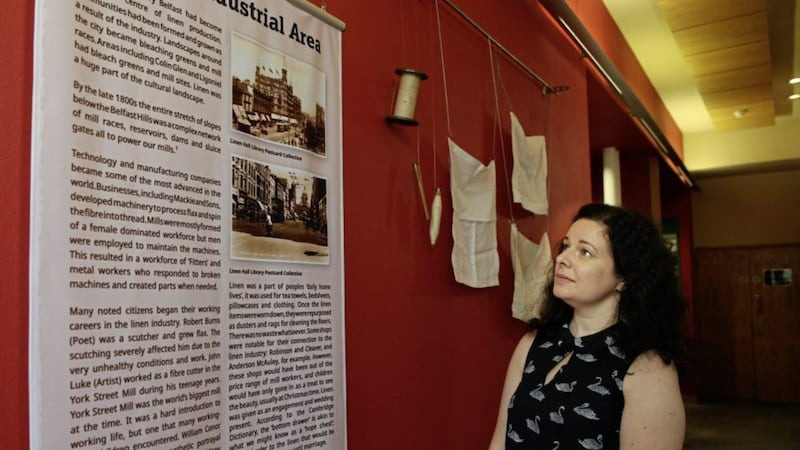

 Special Report: A walking tour of Belfast's historic Linen Quarter
Special Report: A walking tour of Belfast's historic Linen Quarter


